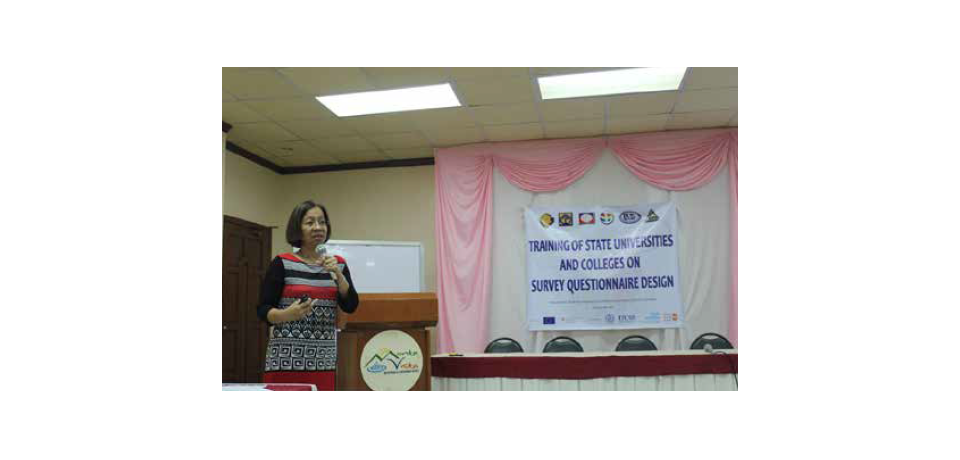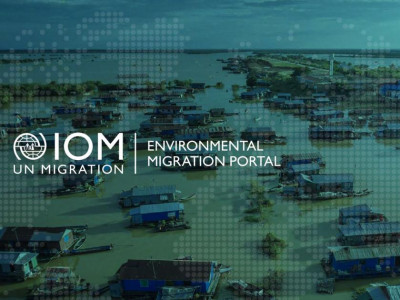Strengthening, upscaling and mainstreaming International Migration and Development (SUMMID)
Joanne Irvine, jirvine@iom.int
Related Sustainable Development Goals and Global Compact for Migration Objectives
Summary
This project comes from the JMDI Phase II, a UN Joint Migration and Development Initiative, run in cooperation by IOM, UNDP, ILO, UN Women, UNFPA, UNITAR which took place from 2012 to 2017 and worked to strengthen, upscale and mainstream migration and development in development policies at the local level through inclusive and sustainable programmes that minimizeed social cost and maximized gains of overseas migration.
Composed of five provinces (Batangas, Cavite, Laguna, Quezon and Rizal), Region IV-A, Calabarzon, is a major emigration region registering the highest number of Overseas Filipinos (OFs). Most OFs from the region are working in Europe, particularly Italy, Germany, Spain and the United Kingdom, as well as in the Kingdom of Saudi Arabia, the United Arab Emirates, Qatar and Singapore. As a result of this high emigration, the region has long experienced important influxes of remittances. Despite the benefits derived from remittances, local government units (LGUs) often do not recognise migrants as key partners and players in economic development.
Overall, through the creation/strengthening of and operationalisation of 5 Migrant Resource Centres (MRCs) and 5 local M&D councils/committees, services to support the protection of migrants’ rights and their integration into the host territory were strengthened and the capacities of the families left behind to better manage remittances for more productive use were enhanced. This was achieved by supporting the Local Government Units and other local actors in question mainstream migration into their local development plans and enhance their understanding of the linkages between migration and development through training.
Key objective
The key objective of the project aimed at strengthening, upscaling and mainstreaming migration and development in development policies at the local level through inclusive and sustainable programmes that minimizeed social cost and maximized gains of overseas migration.
Main activities
The main activities of this project involved:
- The creation of capacity building programmes to create a support system within the academic institutions to respond
to the needs of children of Overseas Filipinos (OFs) and to reduce the social,
psychological and financial costs of migration for migrant families. These support systems were composed of the provision of (i) guidance and counselling and other
social services; (ii) financial literacy training and (iii) mapping and organising of children of migrants. - Performing a more in depth analysis of the city/municipal level by extracting relevant data from four censuses/surveys: (i) a specific questionnaire on migration through the Community-Based Monitoring System, (ii) a survey among Filipino migrants and (iii) a survey among children of migrants.
- LGUs began mainstreaming migration locally by assigning a focal point (key person) or unit responsible for the complete process of mainstreaming migration and development
into local planning. - Targeted research was
done to understand the migration profile of the territory and how migration is linked
to various development sectors in order to mainstream migration and development in a way informed by the
local context and realities of the migrant population. - Building on the collected data and trends, several trainings, workshops and mentoring sessions, as well as consultations with several local offices, took place in order to prioritise the migration and development issues to be dealt with.
- LGUs began designing and developing programmes and services specifically targeted towards and/or inclusive of migrants and their families.
- Funding to finance the physical office space; necessary supplies and equipment; personnel;
training and capacity development activities; as well as informational materials. - Capacity building of the LGUs themselves.
- Mechanisms were then put in place to monitor and evaluate the effectiveness
of the programmes and services in terms of impact, relevance, and sustainability. - Setting up CMDs aimed at: (a) Formulate and recommend planning guidelines and policy directions geared towards mainstreaming migration in development process; (b) Coordinate migration and development efforts of the national/regional/local governments and
the private sector to promote complementarity of plans, programmes and projects, in consultation with migrant groups; (c) Identify and initiate policy research and other special studies to enhance and harness the skills and resources of the migrant
workers and families in collaboration with academia and research institutions; and (d) Provide technical assistance to enhance the capacities of the local
planners in the formulation of programmes, resource mobilisation and setting-up of database responsive to migration and development concerns.
Key successes or innovative factors, good practices and lessons learned (if available)
Key successes of this projects are outlined below:
- Partnerships with academia offer a variety of opportunities: in order to develop successful school based programmes on migration and development, data collection is essential.
- A bottom-up approach to building partnerships between academia and
local actors works, but has its limitations. - A mixed method approach is strategic in gathering local data on migration.
- Engaging local actors in the data collection process is an excellent way to promote broad-based participation in migration and development processes.
- Conducting a situational analysis enhances the clarity of mainstreaming
goals and complementary programmes. - The appointment of a person or unit to lead the process of mainstreaming
migration into development planning increases efficiency. - Ownership of the various stakeholders is essential to ensure successful
mainstreaming. - Results-based reporting is the most effective way to monitor impact.
- The presence of a lead entity is vital to ensure successful multi-level
coordination. - Ensuring clear assignment of roles and responsibilities avoids overlap and ensures a smooth implementation process.
- Multi-level coordination can enhance vertical policy coherence for enhanced local development impact.
Beneficiaries
The indirect beneficiaries of the projects identified were five provinces in Region IV-A and top five sending cities/municipalities per province that benefited from the various capacity building sessions and training. Moreover, direct beneficiaries were migrants and their families in Region IV-A and other migrants in major destination countries who benefited from the investment and financial education course and were provided with additional information and options for economic activities; members of CMD who benefited from the capacity building and training; NGOs and private sector groups involved in M&D initiatives such as the chambers of commerce, microfinance groups, cooperatives, remittance agents, banks and members of the community who benefited from jobs and economic opportunities provided by resources of overseas Filipinos.


